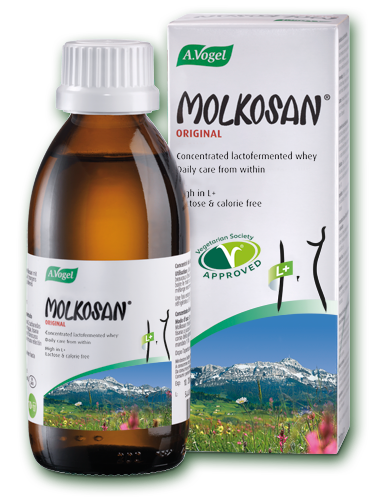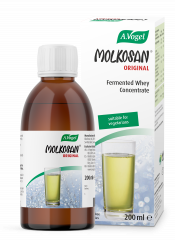Top tips for a healthier kitchen experience
Getting into the kitchen and cooking is a great start to promote better health – simply not enough of us are managing it as convenience foods risk taking over! However, are your kitchen habits on top form or could be you be doing more to make it an all-round healthier experience?
Some of my top tips for a healthier approach include:
- Surround yourself with positive vibes
- Clear out your fridge
- Control the habit of buying snacks
- Rearrange your utilities
- Position your go-to products
- Don't waste leftovers
- Get out of the habit of overcooking food
Throughout this blog I explore these themes in more detail.
Could bad kitchen habits be affecting your health?
1. Surround yourself with positive vibes
I want to encourage cooking as much as possible; therefore the kitchen should be a comfortable place to be! Setting the correct environment helps you create positive associations with the kitchen, meaning with any luck, you'll be keener to get in there a little more often.
Some top tips from me include surrounding yourself with some nice music, some nice lighting (natural is always best so make use of any windows that you have) and add some cosy touches such as plants, decorative items or some inspirational quotes in frames, perhaps. It will be a happy, relaxed setting in no time at all!
2. Clear out your fridge

Clearing out your fridge is not only important to help protect against ill-health (watch out for any signs of mould and keep an eye on use by dates), but actually, there could be more to it than that... the state of your fridge could also be indicative of your health!
If your fridge is looking old and tired, chances are you could be too. Having a good clear out of old jars or tubs and replacing them with some new picks will leave your fridge looking spick and span and your health reflecting some similar qualities as you get stuck into the contents.
Once you choose to be proactive and keep on top of how you look and feel, you won't look back!
3. Control the habit of buying snacks
Everyone deserves a treat now and again, but what happens if this turns into a habit? Nowadays our supermarkets employ clever marketing ploys to lure you into their deals, and unfortunately the bargains can often only be found on highly processed, sugar-laden, junk food.
If you're tempted into buying them like many others, you'll know for the next week or so until you do your next shop (or however long they last in your house!) that you have them available and you might just find that they're calling your name! Despite where you store them (even if you avoid the eye levels tactics of the shops), it's unlikely you'll forget they're there, so the trick is not to buy them in the first place.
For those of you with kids, similar rules apply - break the habit! Why not try out some healthier options like fresh fruit, home roasted nuts or seeds or overnight oat pots. You can get the kids involved in preparing them and take some pride in packing them into tasteful jars or containers so you'll feel proud reaching for your next snack, rather than guilt. Try out some of the recipe ideas I've listed below:
Overnight Passion Fruit Chia Pudding
JS Beauty Bars
Roasted Spicy Nut Mix
Caramelised Onion Houmous
4. Rearrange your utilities

If your microwave takes centre stage in your kitchen, chances are you'll be more tempted to use it. If, instead, it's packed away in a cupboard, you might think twice and look for some other means of cooking your food! There's no denying that convenience food is on the up, but it doesn't need to be this way. After all, traditionally kitchens were created for cooking, so we just need to get back to this.
Clean down your hobs and oven and get them looking sparkling clean and ready for action. Why not invest in some nice new pots and pans which you'll be excited to start using? This will take away the need to root around in your cupboard for one that might be suitable.
Whilst people often use time as an excuse, the reality is, quick and easy, home-cooked recipe ideas are also becoming more readily available in order to suit our hectic lifestyles. 10 minute meals can easily be rustled up with an array of cheap, fresh ingredients, in the same time that it would take you to ping something in the microwave or pre-heat the oven for a ready meal or a pizza.
5. Re-position your go-to products
After sprucing up your hob, it's time to arrange some of your favourite (perhaps new-found) ingredients that you want to get in the habit of using come meal times. If you're not quite sure where to start, we have plenty of inspiration throughout our blogs.
Firstly, cooking oils are a good base for any homemade dish. You might be wondering which is the healthiest option and how you can cook with them; well not to worry as I explain all in my blog 'Our guide to the healthiest cooking oils'. It turns out that extra virgin olive oil is a good bet for most dishes. Why not decant it into a fancy bottle so you'll be keener than ever to get reaching for it?
Next, we have our cooking kitchen staples like onions and garlic. Luckily these also look pretty appealing in a kitchen space so get them visible so you can get into the habit of reaching for them as the base for every meal.
Finally, we have our seasoning pots including our salt, pepper and herbs and spices. Any good chef will have these to hand when cooking. These not only leave your food tasting and looking great, but herbs and spices, in particular, have a whole host of benefits including anti-inflammatory properties.
Dried spices are good to have on hand for sauces, whilst fresh herbs often make a lovely choice when finishing dishes off. These look fantastic when grown on a window ledge in pots too, plus it's great value for money maintaining them in this way – bonus!
Top tip: In the habit of buying salad dressings? Many of us are but these are expensive, often unhealthy and don't keep for very long so my advice is to make your own instead. Salad dressings are super versatile, so often after a few tries you won't even need to stick to a recipe. Follow my guide below:
1 – Use oil as a base. My top pick is almost always extra virgin olive oil but other options can include walnut or avocado oil.
2 – Add some acidity. Depending on what's accompanying the salad, you can mix this up a bit. Popular choices include lemon or lime juice, red wine vinegar, white wine vinegar, balsamic vinegar, apple cider vinegar or Molkosan if you're looking for some extra gut-health benefits.
3 – Add some zing. I often opt for a punch of flavour from either some crushed, fresh garlic, ginger, wholegrain mustard or combination of a few of these if you're feeling brave and really want to inject some life into that salad.
4 – Finish on a high. Just like any homemade dish, a touch of seasoning at the end is a must. This could be a pinch of salt and pepper, some chilli flakes or some fragrant dried oregano – get creative and you can get in the habit of changing it up each time!
My Top Tip: Take Molkosan 1-2 times daily in a tall glass of water for best results. Take Molkosan 1-2 times daily in a tall glass of water for best results.
|
6. Don't waste leftovers

Once you start cooking you'll soon find you have more food than you know what to do with! This is great, as it means you won't be wasting any fresh ingredients, and you have the added benefit of having some extra, nutritional meals to put to good use.
Depending on the meal and the quantity leftover, packing it into containers for the fridge means you'll have a meal handy for the next day too – hey, it could change your boring, office lunches for the better!
If you have a number of extra portions leftover, freezing most meals is an option. This means that if you're ever in a real rush and don't have time to start from scratch, you'll still have an impressive supply of homemade, nutrient packed 'ready meals' at your fingertips.
7. Get out of the habit of overcooking food
With any new habits, it takes a while to get into the swing of things and you might worry you aren't doing it right. When it comes to cooking, this often means people start off overcooking food, especially if you're worried they could cause harm to your loved ones.
This all takes time but don't worry, you'll soon get into the swing of it! You'll start to get used to the colours and textures of food as a good indication if they're over cooked. Fish or meat tends to dry out whilst vegetables lose their vibrant colour and both can indicate that some of the nutrient potential of these foods has been lost. It pays to stick with it in order to get into good habits, and your health will soon reap the benefits.








